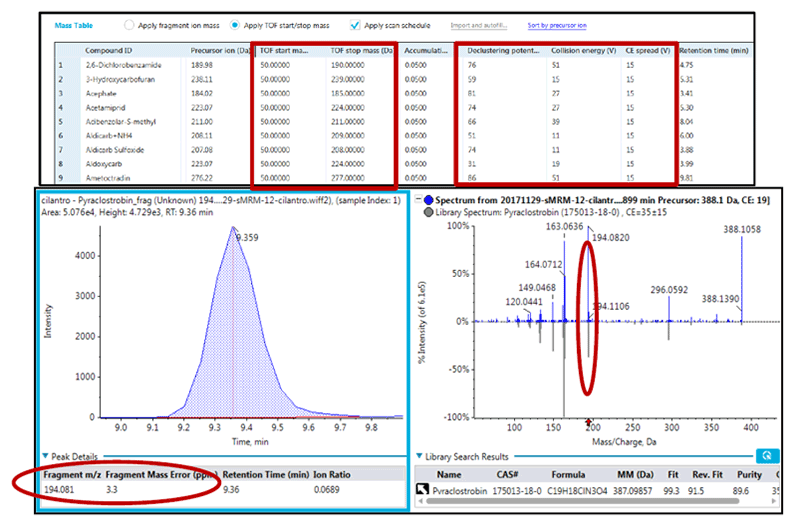MRMHR full scan for high sensitivity and compound confirmation with MS/MS library matching
Targeted analysis with high sensitivity and MS/MS matching for compound confirmation
Craig M. Butt, Katherine C. Hyland, April Quinn-Paquet
1SCIEX, USA; 2SCIEX, USA
What: MRMHR workflowis a targeted screening technique that is highly sensitive because the optimal compound-specific declustering potential (DP) and collision energy (CE) are used during sample acquisition. In contrast to traditional triple quadrupole MRM, the fast scan speed of the X500R QTOF System allows for acquisition of the full MS/MS spectrum without increasing cycle time. The experimental MS/MS spectrum can be compared against verified spectral libraries for compound confirmation.
Acquisition: Compound specific parameters (DP, CE and product fragments) are determined using the Guided MRMHR module in SCIEX OS Software. In the “MS Method” tile, a MRMHR is selected and optimized source and gas conditions are entered. In the TOF MS/MS table “apply TOF start/stop mass” is selected with the mass range covering from the expected low fragment mass to the charged precursor mass (i.e. m/z 50-190 for 2,6-dichlorobenzamide). The optimized DP and CE are entered; CE spread of 15 V is used to ensure a complex spectrum for MS/MS library matching.
Processing: In Analytics, the components table is built with the precursor and fragment ions. The “Library Searching” feature is selected, and the appropriate MS/MS library is chosen. In the example below, pyraclostrobin is detected in a cilantro extract. The exact fragment mass (m/z 194.081) is extracted and the experiment fragment mass error is 3.3 ppm which indicates an excellent mass accuracy. Further, the MS/MS spectrum matches that of pyraclostrobin with an excellent “fit” score of 99.3.
Figure 1. Pyraclostrobin detected in a cilantro extract. MS/MS spectrum match to library with fit score of 99.3 for confident identification.
 Click to enlarge
Click to enlarge